Judi Lynn
Judi Lynn's JournalSpeeding to extinction? The fate of Pacific bluefin tuna may be decided this week
Speeding to extinction? The fate of Pacific bluefin tuna may be decided this week
By Melissa Cronin June 29 2015
Pacific bluefin tuna are hurtling toward extinction, and a meeting of the minds in Ecuador this week may be their last hope.
The meeting, set for Guayaquil, the county's largest and most populous city, is bringing together representatives from member countries of the Inter-American Tropical Tuna Commission (IATTC), the organisation that governs management of Pacific tuna fisheries. One of their main goals: to figure out how to prevent one of the world’s most valuable fisheries from collapsing.
The past decade has been a disastrous one for Pacific bluefin tuna. Listed as ‘Vulnerable’ by the International Union for Conservation of Nature (IUCN), its populations are at just 4 percent of what they were before commercial fishers began capturing them by the thousands. Now, according to a recent study, only about 40,000 adult Pacific bluefin tuna remain.
“If we keep on this track, it’s bad news,” warns Oceana's Max Bello. “We can only expect crash of this stock.”
The Ecuador gathering, to be held from June 29 to July 3, is a chance for countries to agree to enact catch quotas that could save the Pacific bluefin. Failure to do so could lead to their collapse.
More:
http://www.earthtouchnews.com/conservation/human-impact/speeding-to-extinction-the-fate-of-pacific-bluefin-tuna-may-be-decided-this-week
On the streets of Cuba
On the streets of Cuba
Painstakingly maintained cars are a 'living museum' of pre-1959 design
By Bradford Wernle RSS feed
Published June 28, 2015 - 12:01 am ET

SANTIAGO DE CUBA, Cuba — I climb into the back seat of a fire-engine red 1957 Chevrolet Bel Air taxi owned by Argelio Pena Mendoza here in Cuba’s second largest city. Mendoza turns the key, and the ancient inline six-cylinder engine wheezes and rumbles to life in a haze of exhaust smoke. He shoves the car’s three-on-the-tree shift lever into first, and we’re off.
Only Mendoza knows the secret of how the door handles work, so he lets me and my friend Tom in and out of the 58-year-old car as we tour Santiago’s highlights, including San Juan Hill, where Teddy Roose-velt’s Rough Riders won their biggest victory of the Spanish-American War in 1898.
Mendoza, a 60-ish man, pulls into a gas station. I wait for him to flip open the little chrome door on the left rear fin behind which the 1957 Chevy’s gas cap is famously concealed. But Mendoza’s car has no gas tank. Instead, he hoists the hood and pumps gasoline into a pair of 1-gallon plastic bottles under the hood in front of the radiator. These bottles are connected to the fuel pump by plastic lines. Mendoza opens the trunk to show me a hole in the floor through which I can see the road below.
“Maybe someday I will find a gas tank,” he says with a shrug. For now, he must make do, as do so many Cubans, whose mechanical resourcefulness never ceases to amaze me.
More:
http://www.autonews.com/article/20150628/OEM/150629921/on-the-streets-of-cuba
Cuba's warming relations with the US may undermine its agroecological city farms
Cuba's warming relations with the US may undermine its agroecological city farms
Julia Wright & Emily Morris
27th June 2015

[font size=1]
Lettuce on an Organic Farm in Havana, Cuba.
Photo: David Schroeder via Flickr (CC BY-NC-ND).
[/font]
Cuba is a global exemplar of organic, agroecological farming, taking place on broad swathes of land in and around its cities, write Julia Wright & Emily Morris. These farms cover 14% of the country's agricultural land, employ 350,000 people, and produce half the country's fruit and vegetables. But can they survive exposure to US agribusiness?
For more than 20 years, Cuba has been developing a sophisticated urban and suburban food system, producing healthy food, improving the environment and providing employment. But how will the sector survive if the economy opens up to US agricultural and industrial trade and investment?
The first urban farms emerged spontaneously in Cuba out of the hardships of the early 1990s. People in towns and cities began to cultivate urban waste land and keep small livestock as a coping strategy.
Possibly the first co-ordinated effort was the Santa Fe project in the north-west of Havana City, initiated in 1991. Taking advantage of the available resources within the community, empty urban space was reclaimed for food production to help overcome irregular and inadequate food supplies.
More:
http://www.theecologist.org/News/news_analysis/2919056/cubas_warming_relations_with_the_us_may_undermine_its_agroecological_city_farms.html
[center]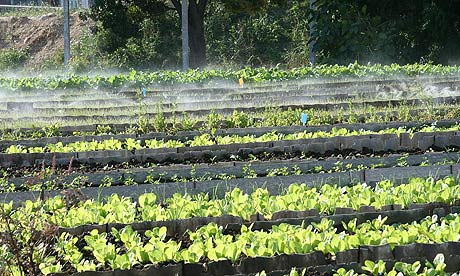






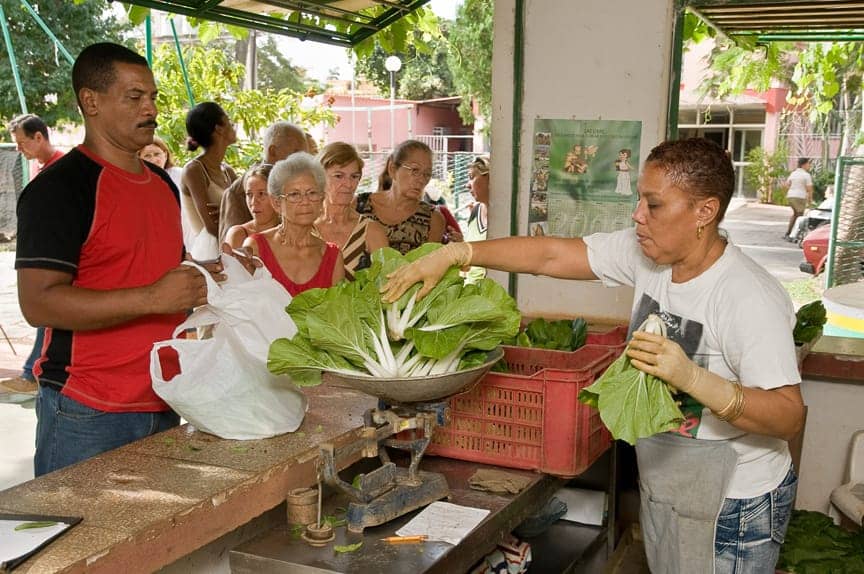

 [/center]
[/center]
How The Battle Over Elián González Helped Change U.S. Cuba Policy
How The Battle Over Elián González Helped Change U.S. Cuba Policy
June 28, 201512:43 PM ET

Sunday marks the 15th anniversary of the end of the Elián González drama — the international custody battle that gave the cable news networks bizarre fodder for seven long months in 1999 and 2000.
Elián was a 5-year-old boy found drifting off the Florida coast after his mother drowned during their attempt to escape communist Cuba. Miami's anti-communist Cuban-American leaders demanded Elián be allowed to live with relatives in Miami. The boy's father wanted him back in Cuba. So did Cuban leader Fidel Castro.
International law was on Cuba's side. Which is why that Easter weekend, U.S. agents had to seize Elián during a controversial raid on the Miami family's home in Little Havana. Two months later, on June 28, all the court appeals ended and Elián returned to Cuba. In his wake, he left a Cuban-American community in disarray — but more poised to update its geopolitical outlook.
"It was a pivotal event," says millionaire Miami businessman Carlos Saladrigas. "It changed the whole dynamic of the Miami community. It changed me." Saladrigas was one of the hardline Cuban-American leaders involved in negotiating Elián's fate with the feds. But when it was all over, he says he and many others began some serious soul-searching.
More:
http://www.npr.org/sections/parallels/2015/06/28/417716173/how-the-battle-over-eli-n-gonz-lez-helped-change-u-s-cuba-policy
More Accusations Flow Over Guatemala's Pérez Molina: When Will It End?
More Accusations Flow Over Guatemala's Pérez Molina: When Will It End?
Sunday, 28 June 2015 00:00
By Eliza Davis, Council on Hemispheric Affairs | News Analysis

[font size=1]
Guatemalan President Otto Pérez Molina. (Photo: CSIS)
[/font]
Protests in Guatemala demanding the resignation of President Otto Pérez Molina have continued due to accusations against him for corruption and human rights violations. In response to the demonstrations, Guatemala's Supreme Court demanded an investigation of the president on June 10. Two days later, its congress appointed five of its members to explore the allegations against Pérez Molina and decide whether to strip him of his prosecutorial immunity.[1] Recent events have caused some politicians and top officials, most notably Vice President Roxana Baldetti, decisions' to switch parties or resign, but the scandal has not affected Guatemala's relationship with the United States. The Obama Administration has upheld its pattern of "see no evil" in continuing the process of granting $1 billion USD in aid to Guatemala, raising the question of the U.S. commitment to fighting corruption and human rights violations.[2]
Before he became president in 2012, Pérez Molina was a general in the Guatemalan Army, where he had a "long and varied career," most of which was during the Guatemalan Civil War, which spanned from 1960 to 1996.[3] During Pérez Molina's stint as the head of the Intelligence Directorate from 1992 to 1993, the army captured a Guatemalan rebel commander named Efraín Bámaca Velásquez. [4] Bámaca later disappeared. According to the Guatemalan Human Rights Commission, the military claims that Bámaca committed suicide, but others, like his widow, U.S. lawyer Jennifer Harbury, claim that he was tortured and killed by the military. In 2011 she filed a case against Pérez Molina for facilitating the torture and disappearance of her husband, and even though the Inter-American Court of Human Rights has demanded that the case be reinvestigated, the Supreme Court has not complied.
A book by Francisco Goldman, The Art of Political Murder: Who Killed the Bishop?, alleges that Pérez Molina was also involved in the death of human rights defender Bishop Juan José Gerardi Conendera in 1998. Four days before he was beaten to death in a garage, Gerardi had released a four-volume report identifying the names of 53,000 civilians who had been killed during Guatemala's Civil War and, further, found the army, not the guerrilla organizations, responsible for 80 percent of these death.[5] This information would have linked then General Pérez Molina to many of those crimes, so the thought that Pérez Molina was involved in Gerardi's murder is not so far fetched. The Guatemalan government has yet to investigate these claims nor is there any indication that they will.
Since Pérez Molina became president, critics have linked him to other corruption schemes. In May 2013, former dictator Efraín Ríos Montt was convicted for crimes against humanity for killing 5.5 percent of the Mayan Ixil population during his 17 months in office. Evidence shows that Pérez Molina could have been involved in these atrocities as well.[6] The International Commission on Impunity (CICIG) has implicated him in schemes that tap money from public healthcare programs that are already pressed for resources.[7] Corruption charges involved a $14.5 billion USD contract for pharmaceutical supplies granted by the Guatemalan Social Security Institute.[8] CICIG has further linked him to a scheme called "The Line," which has involved many government officials, including the recently resigned Vice President Baldetti in a scheme to siphon off tax dollars during the process of importing and exporting goods.
More:
http://www.truth-out.org/news/item/31615-more-accusations-flow-over-guatemala-s-perez-molina-when-will-it-end
A “Peace Community” Tries Nonviolent Resistance in Colombia
A “Peace Community” Tries Nonviolent Resistance in Colombia
Posted 28 June 2015 16:30 GMT
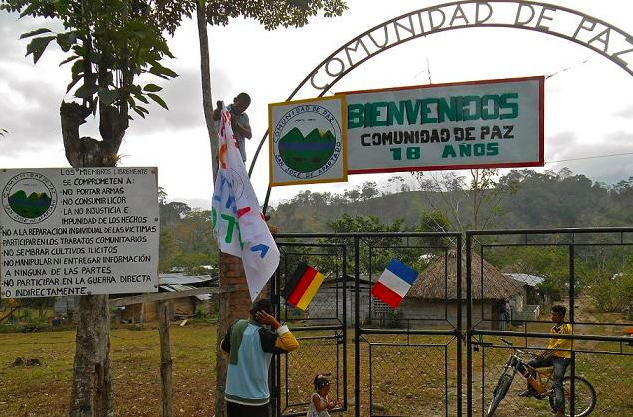
The Peace Community of San José de Apartadó celebrated its 18th Anniversary in March 2015.
Photo: Nikki Drake
This article by Nikki Drake was originally published on NACLA's website and is republished here as part of a content-sharing agreement.
We are now more than two years into the Colombian peace talks. Meeting in Havana, negotiators for the Colombian government and its principal antagonist, the Revolutionary Armed Forces of Colombia (FARC), have been trying to agree upon an intricate deal to end the country’s long-running armed conflict. Meanwhile, as the talks proceed, some communities have attempted to diminish the violence by maintaining an active and credible distance from all major parties of the conflict. The Peace Community of San José de Apartadó (PC) in the northwestern department of Antioquia is one of those communities.
Created by peasant farmers in 1997, the Peace Community seeks to avoid being drawn further into the country’s armed conflict by peacefully resisting the occupation of its lands by both government-supported and oppositional armed actors. From the beginning, PC members refused to participate in a government security program being promoted known as CONVIVIR, which, among other things, used civilians as informants against guerrilla forces. Participation in this program would have undermined the group’s neutrality—one of its founding principles—and put it at even greater risk of violence.
After a massacre that took the lives of seven Peace Community members in 2005, which then president—and former governor of Antioquia—Álvaro Uribe blamed on the FARC guerrillas, he publicly accused PC leaders of “being in the services of the FARC” and “of wanting to use the Community to protect this terrorist organization.” However, Colombia’s Attorney General later determined that the massacre was carried out by the paramilitary group United Self-Defense Forces of Colombia (AUC) in coordination with the Colombian National Army’s 17th Brigade. State entities and public forces have been linked to acts of violence against Colombian communities for years. Uribe himself has been accused of ties to paramilitary groups throughout his political career. An official investigation was opened against him in 2013, but in March of 2014 he was elected to the Colombian Senate, where he remains a powerful political force—an opponent of the Santos administration and the current round of peace talks.
Almost since its inception, the Peace Community has been covered by protective measures of the Inter-American Court of Human Rights (IACHR), a body of the Organization of American States (OAS). These measures require that the Colombian state respect and protect the Peace Community, as well as investigate the crimes perpetrated against its members. The OAS system, however, does not have the power of enforcement, relying on international political pressure as its tool for the implementation of rulings. The Colombian Constitutional Court (CCC) upheld the IACHR’s measures in 2003 and 2007. Additional national directives prohibit Colombian public forces and government officials from stigmatizing or defaming human rights defenders such as the PC and its accompaniment organizations. However, these court rulings and directives have often been disregarded.
More:
http://globalvoicesonline.org/2015/06/28/a-peace-community-tries-nonviolent-resistance-in-colombia/
‘The Ghosts of 1937 Are Warning Us’
‘The Ghosts of 1937 Are Warning Us’
The past feels dangerously present as deportation and silence devastate Haitian life in the Dominican Republic.
Roberto Lovato June 26, 2015
Dajabón, Dominican Republic—The sticky, humid air in the offices of Solidaridad Fronteriza (SF), an advocacy organization in the bustling Dominican border city of Dajabón, was thick with stress. As a bilingual (Spanish-Creole) social worker turned to help the next client, a 30-something woman whose face twitched involuntarily as she held her child, the woman exploded in a rat-tat-tat of questions in Creole. Eske y’ap voye pitit mwen Ayiti? Ou kaede’m ? Kisa’m ka fè kounyè a? [Will they send my child to Haiti? Can you help me? What can I do now?]
In a calming tone, the social worker tried to comfort the woman, to no avail. After a couple of minutes of talking in the lobby, the woman rushed off, dejected that she could find no immediate relief. Like all her colleagues at SF, the social worker was visibly stressed after more than two weeks of dealing with dozens upon dozens of similar situations: immigrant Haitians desperately seeking documents from the Dominican or Haitian governments that they now need to stay in their homes; Haitians with family members whose homes were raided and who were deported; Haitians united by the two central facts of their lives now: the possibility that their Dominican Republic-born children’s citizenship will be stripped and the imminent possibility that they will be deported en masse.
In recent days, the sound of Creole in the streets of the Dominican Republic’s hamlets, towns, and cities has largely been silenced. Many immigrants have opted to stay home, leaving their workplaces in the informal and agricultural economy without workers, who fear that the United States-trained Dominican military and border patrol (CESFRONT) will begin mass arrests of Haitians—put them on buses and unload them in mass detention camps before deporting them, as the government has promised. Dajabón, the usually loud border city where the crush of struggling, entrepreneurial blackness erases the boundary between Haiti and the D.R., has given way to the reign of traumatic silence that’s taking hold throughout the country.
On the immediate level, what’s pushing Haitians into hiding and silence is the intensification of abuses by the military and CESFRONT that have accompanied the deportation crisis. SF and a host of other national and international organizations have documented such abuses in Dajabón and across the country. There have been reports of payola in processing documents, of rape of Haitian women left vulnerable by the process, of houses invaded and property stolen as children and family watch in terror, and of beatings delivered to those who complain about unfair treatment at processing centers. One of the most common complaints, however, is that officials in both the Dominican and Haitian governments have lost or never delivered the documents people need to prove their citizenship. And like their main patron, the US government, the military, and CESFRONT have, for some time, aggressively pursued immigrants in raids and arrests that are less spectacular than the now promised mass deportations, but that are equally destructive to families and lives. Between last January, when the government launched Operación Escudo (Operation Shield), and March of this year, 40,000 Haitians were detained in and around Dajabón and other border communities, according to the Dominican military.
More:
http://www.thenation.com/article/210897/ghosts-1937-are-warning-us#
Ted Cruz's father an early Fidel Castro revolutionary, memoir claims
Ted Cruz's father an early Fidel Castro revolutionary, memoir claims
Texas senator writes that father Rafael Cruz led a group of insurgents staging a sabotage against the Cuban dictator Batista and was eventually tortured
Associated Press in Austin, Texas
Saturday 27 June 2015 15.44 EDT
Texas Republican Senator Ted Cruz’s father was a 1950s Cuban revolutionary who longed to slip into the island’s eastern mountains and join Fidel Castro’s guerrilla army.
At 17, Rafael Cruz led a group of insurgents staging urban sabotage against the Cuban dictator Fulgencio Batista. Cruz was eventually jailed and tortured, and upon his release wanted the underground to help him personally reach Castro’s camp in the Sierra Maestra highlands.
“My dad asked if he could join Castro in the mountains and keep fighting,” the firebrand Republican presidential candidate writes in his book, A Time For Truth, which will be released on Tuesday. “But he was told there was no way to get to the rebels.”
Instead, the elder Cruz bribed his way to a Cuban exit visa and headed to the University of Texas.
More:
http://www.theguardian.com/us-news/2015/jun/27/ted-cruz-memoir-father-cuba-revolutionary-fidel-castro
[center]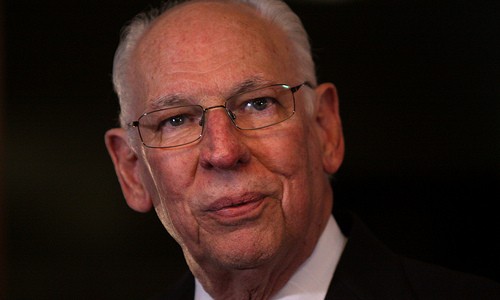
Rafael Cruz
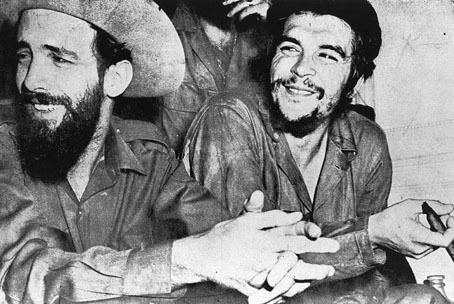
Camilo Cienfuegos, Che Guevara, waiting for Rafael Cruz to arrive.
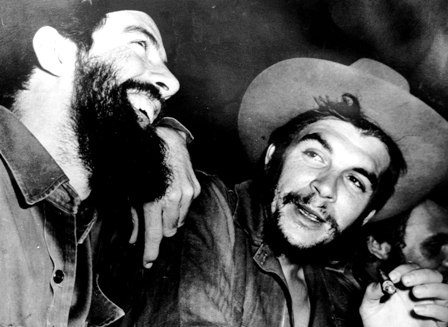
Camilo Cienfuegos, Che Guevara, wearing each other's hat, waiting for Rafael Cruz to arrive.
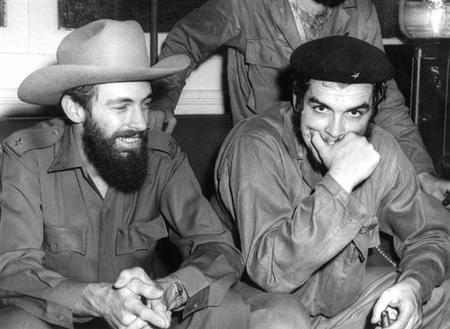
Camilo Cienfuegos, Che Guevara, still waiting.

"They had to struggle on without Rafael.

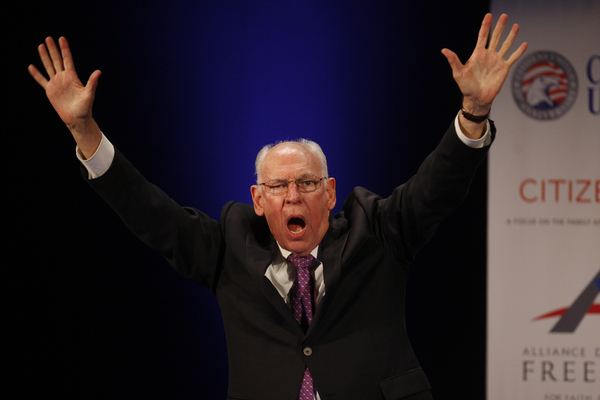
He went North to spread the word of The Divinity.[/center]
The Honduran meltdown: Made in USA
The Honduran meltdown: Made in USA
Six years after the coup in Honduras, it's time for another history lesson.
28 Jun 2015 09:00 GMT
Belen Fernandez is the author of The Imperial Messenger: Thomas Friedman at Work, published by Verso. She is a contributing editor at Jacobin Magazine.
@MariaBelen_Fdez
In May 2005, US Deputy Secretary of State Robert Zoellick appeared at the conservative Heritage Foundation in Washington to rally support for CAFTA, a free trade agreement between the US, the Central American countries, and the Dominican Republic.
In his remarks, Zoellick played up the notion that, for Central America and the DR, the agreement would "strengthen democracy through economic growth and open societies based on the rule of law", while also entailing various perks for the gringos; a T-shirt reading "Made in Honduras", he enthused, would likely contain over 60 percent US content.
The deputy secretary and future president of the World Bank went as far as to assert that, "In many ways, CAFTA is the logical culmination of 20 years of democratic and social progress in Central America, nurtured and encouraged by the United States."Never mind that, 20-some years ago, the United States was nurturing things like Battalion 3-16, described by the Baltimore Sun as a "CIA-trained military unit that terrorised Honduras for much of the 1980s".
Anything but the communists
To be sure, much of Honduras' contemporary plight - while perhaps appearing on the surface, like Zoellick's T-shirt, to be a domestic creation - is in fact Made in USA.
More:
http://www.aljazeera.com/indepth/opinion/2015/06/honduran-meltdown-usa-150628064420182.html
LA forum:
http://www.democraticunderground.com/110841837
The Kuna: the endangered last tribe of the Caribbean – in pictures
The Kuna: the endangered last tribe of the Caribbean – in pictures
Photographer Eric Lafforgue documents the island tribe, whose existence is threatened by rising sea levels. The Kuna live on the San Blas islands off the coast of Panama – which have one of the world’s highest populations of albinos
Eric Lafforgue/Barcroft Media
Friday 26 June 2015 06.24 EDT
[center]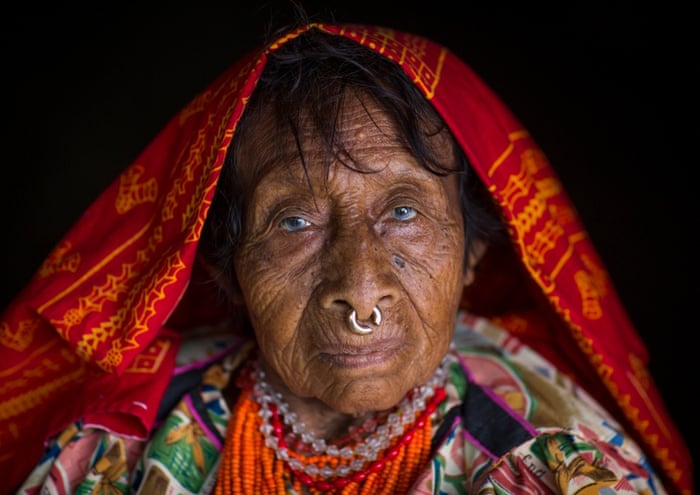
There are roughly 50,000 Kuna, who are one of the largest remaining indigenous South American tribes

They live in communities spread out across the San Blas islands off the coast of Panama in the Caribbean
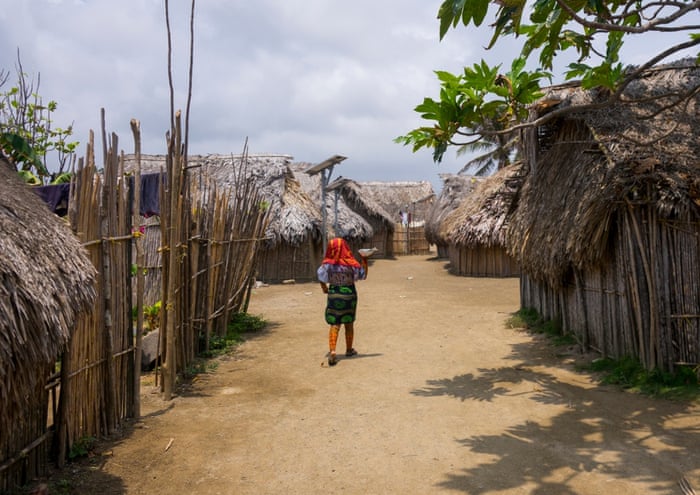
The Kuna have simple lifestyles and maintain their unique traditions, living in huts made of palm fronds[/center]
More:
http://www.theguardian.com/artanddesign/gallery/2015/jun/26/the-kuna-the-endangered-last-tribe-of-the-caribbean-in-pictures
Profile Information
Member since: 2002Number of posts: 160,630